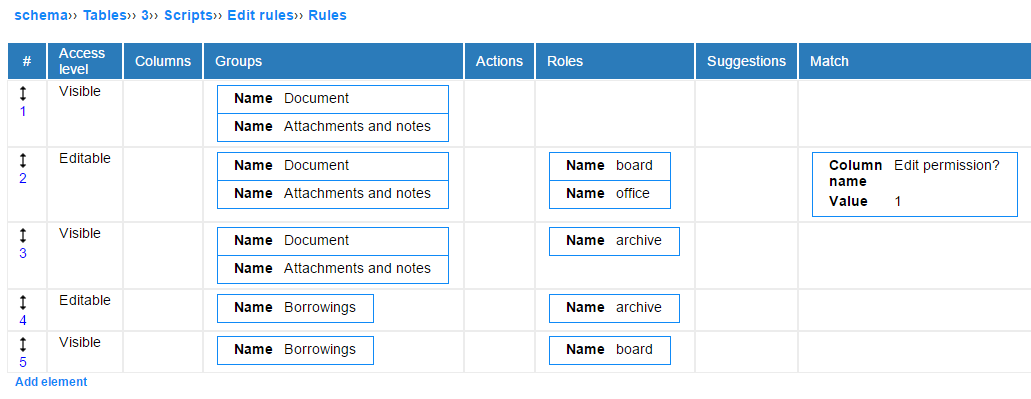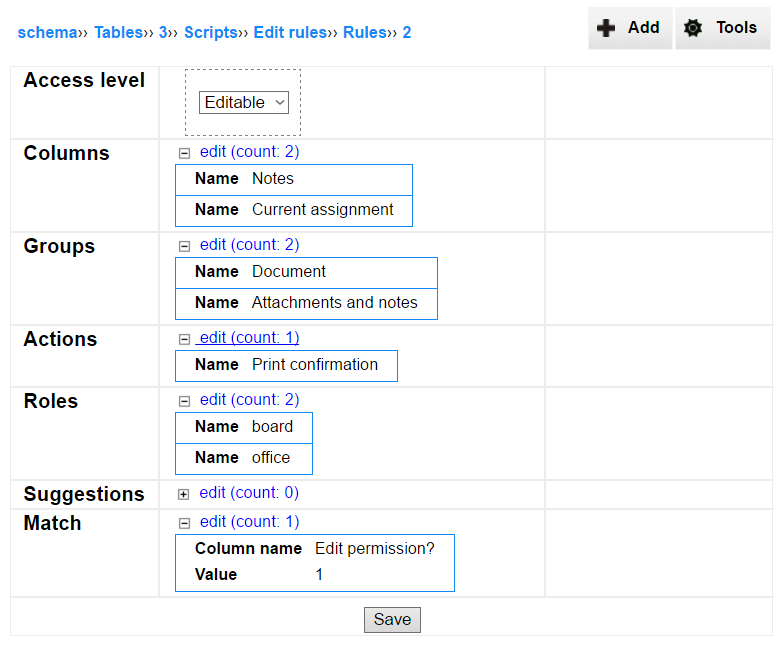Edit rules
Edit rules and new rules are used for limit visibility and editability of columns and groups of a table. The edit rules define the accessibility of particular fields when a record does already exist.
Edit rules list
The default setting (when no single rule is defined) is the edit permission for every group and every column (except expression columns, of course).
It is possible to add any number of edit rules to a table. The order of rules on the list does not affect the final result.
It is important to remember that rules are cumulative. View and edit permissions from different rules are summed - final see/edit permission is result of logic AND operation. It means that if a permission is applicable for a user by a single rule, it will be active even if the other rules do not give such permissions.
Note: the new and edit rules are not a mechanism providing full access control. To protect data from unauthorized read or write you should use access control mechanism.

An edit rule definition
The definition of an edit rule contains the following parameters:
-
Access level which will be applied to columns and groups. There are two possible values:
-
Visible means that the specified columns and groups will be in the read only mode,
-
Editable means that all specified columns and groups (except expression columns) will be visible.
-
-
Columns - list of columns to be the subject of the rule.
-
Groups - list of groups controlled by the rule.
-
Actions are the extensions specified in the "Edit action" section of table definition in Schema Editor. If at least a single edit action for a table exists, it is necessary to explicit allow every action in this section in order to make them displayed.
-
Roles - list of roles for which the rule will be applied. If no role is specified, the rule will be applied to all roles.
-
Suggestions let to define values automatically filled when the record screen is loaded. They are rarely used in case of edit rules. Form more detailed description check the analogous section of new rules documentation.
-
Match is in many ways similar to the roles section, as it specify when a rule is applied. But instead of a user role the current state of a record is taken into account. The match definition is composed of two elements:
-
Column name which value is checked,
-
Value which is expected to match the column content.
If the column content is equal the expected value, the rule is applied. In other case it takes no effect. It is common to use the column specified in the workflow section of table schema to match the way the record is displayed with it's current state.
-
Note that if a column is not present in any rule (directly or by group assignment), it will not be displayed on the record screen.
